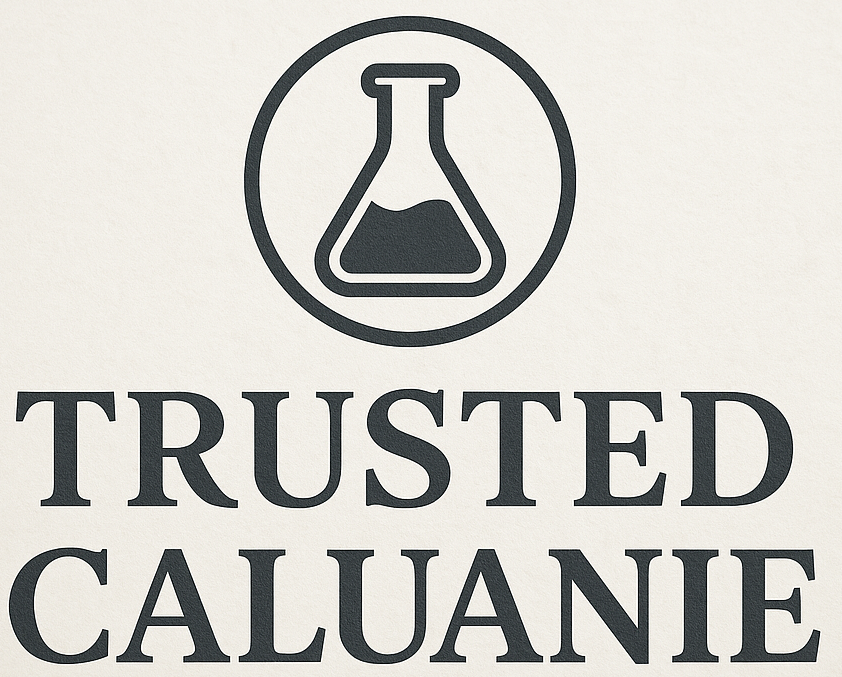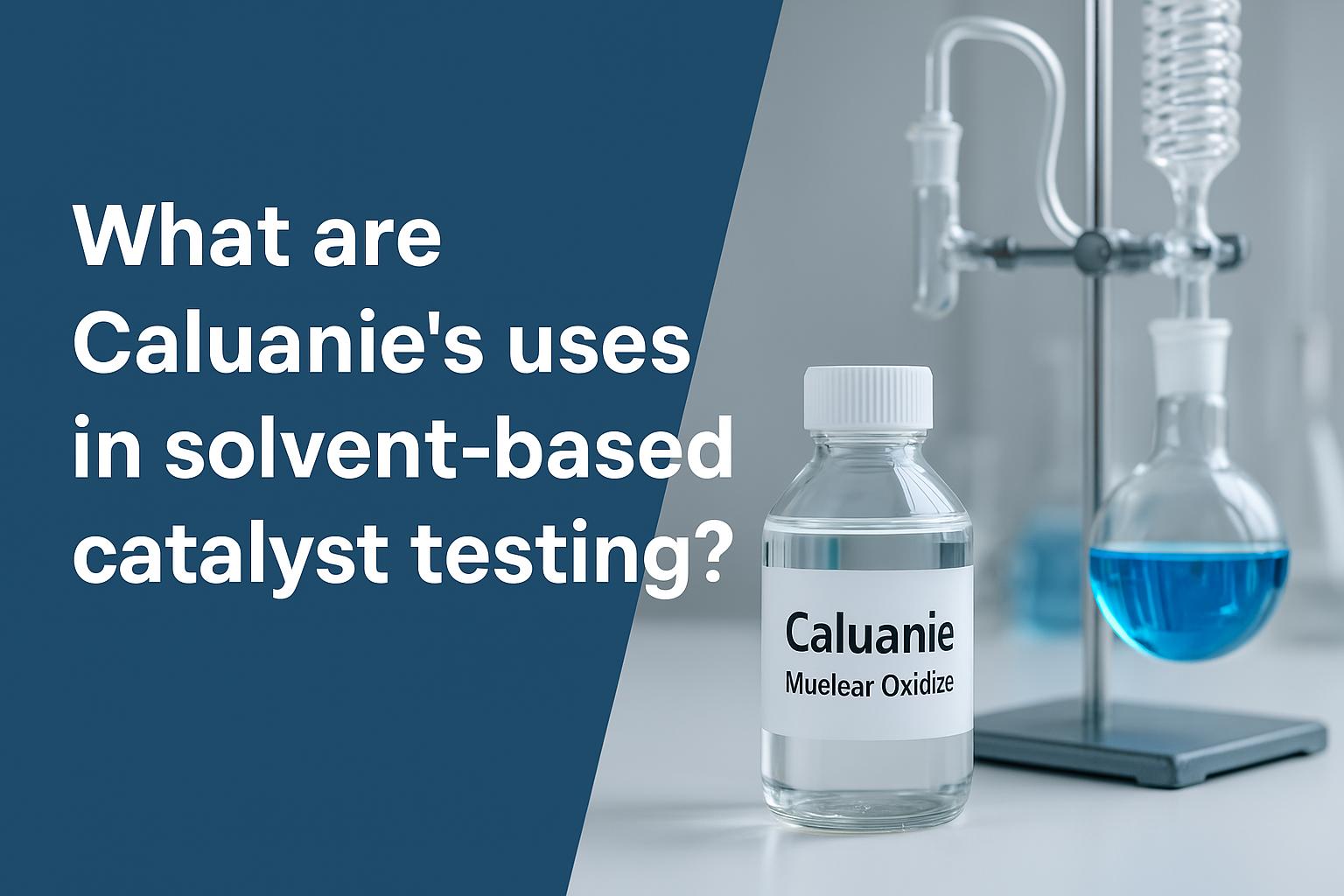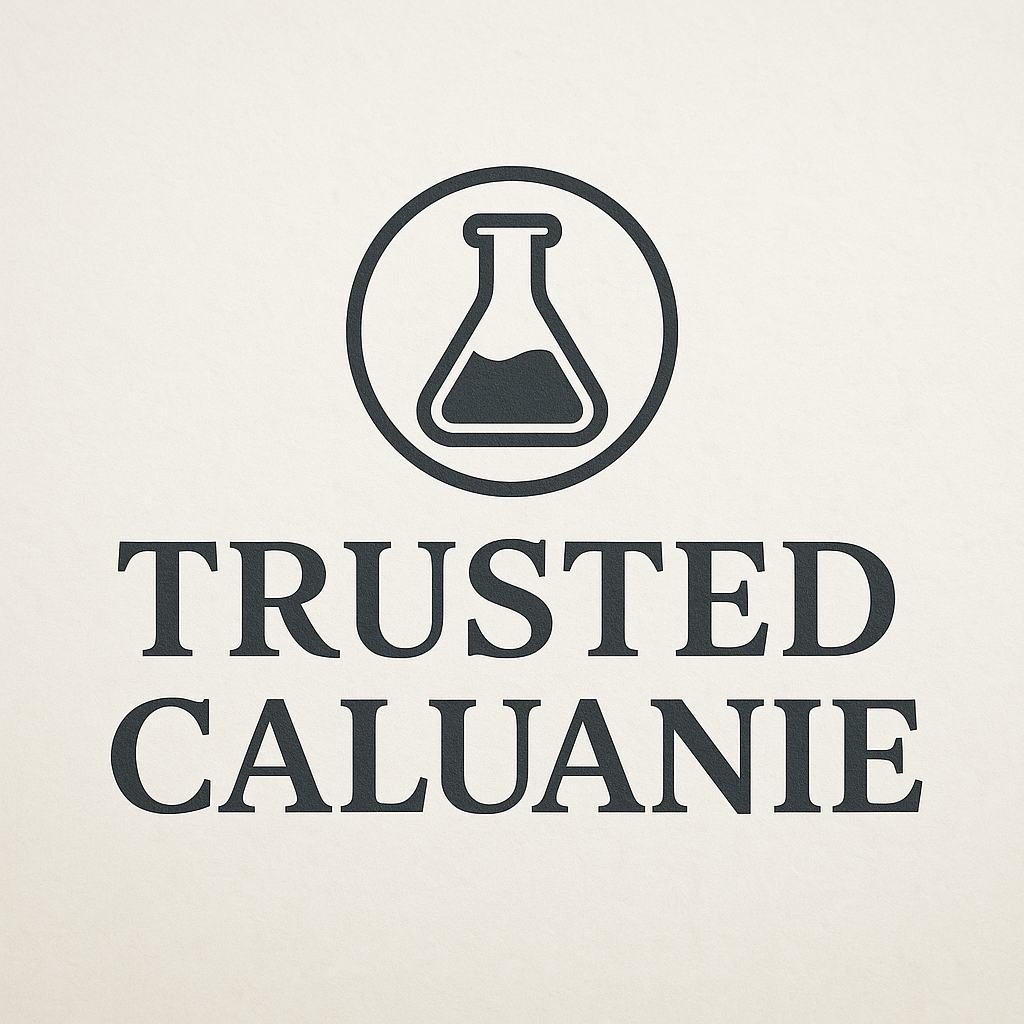Caluanie Muelear Oxizide is used in solvent-based catalyst testing to accelerate reaction rates, simulate industrial stress conditions, and evaluate catalyst durability. It modifies solvent environments by altering pH, polarity, and redox behavior, helping researchers test catalyst performance under extreme conditions. Caluanie interacts with both metal and non-metal catalysts, promoting surface activation, controlled degradation, and fouling simulations. It also supports stress testing in multi-solvent systems, assists in analyzing spent catalysts, and maintains stability under heat. Labs use Caluanie to measure catalyst lifespan, regeneration ability, and resistance to oxidation, fouling, and chemical breakdown—all within solvent-rich environments.
Role of Caluanie in Accelerating Solvent-Catalyst Reactions
Caluanie plays a vital role in accelerating reactions between catalysts and solvents, especially in tests designed to replicate industrial wear and chemical exposure.
- Promotes faster reaction kinetics
Caluanie’s oxidative properties disrupt molecular stability, lowering activation energy and speeding up catalytic processes. In solvent systems, this results in quicker transformations during testing. - Enhances molecular breakdown for reaction assessment
It breaks down bonds within organic and inorganic compounds, making it ideal for testing catalysts designed to operate in decomposition or refining processes. - Supports high-throughput experimental conditions
Caluanie is effective in testing environments where multiple reactions are assessed simultaneously, reducing overall testing time and improving throughput. - Simulates harsh operational environments
By accelerating reaction rates, Caluanie mimics high-temperature or high-pressure industrial conditions, allowing scientists to stress-test catalysts under extreme simulations. - Aids in benchmarking catalytic efficiency
When comparing different catalysts, Caluanie helps highlight performance differences by exaggerating reaction speed and identifying which catalyst maintains performance under rapid breakdown.
Caluanie as a Reaction Modifier in Catalytic Testing Protocols
Caluanie is commonly introduced in solvent-based protocols as a reaction modifier, helping researchers simulate complex, real-world chemical environments.
- Alters pH balance in mixed solvents
Caluanie slightly acidifies the solvent mixture, creating an oxidative atmosphere ideal for testing acid-resistant catalysts. - Increases solvent reactivity
Caluanie enhances the reactivity of otherwise stable solvents like ethanol or acetone, making them more aggressive in catalyst interaction tests. - Controls thermal behavior
Due to its thermal properties, Caluanie contributes to exothermic behavior, helping simulate operational heat spikes without external heating sources. - Affects redox potential
Caluanie shifts redox balance, allowing researchers to observe how catalysts behave under fluctuating oxidative-reductive conditions. - Used to alter polarity in catalyst-solvent interfaces
It changes the solvent polarity slightly, helping test the catalyst’s interaction with different polar or non-polar substrates during the same testing session.
Compatibility of Caluanie with Common Industrial Solvents
Ensuring chemical compatibility is crucial in catalyst testing. Caluanie is known for its reliable behavior across a range of industrial solvents.
- Fully miscible with polar and non-polar solvents
Caluanie blends evenly with solvents like ethanol (polar) and toluene (non-polar), making it flexible for different experimental setups. - Does not destabilize solvent solutions
Even in prolonged storage or under variable temperatures, Caluanie doesn’t separate or precipitate, maintaining test consistency. - Can be pre-mixed without degradation
Labs can prepare Caluanie-solvent blends in advance, with no loss of effectiveness or change in chemical behavior over time. - Used in both aqueous and non-aqueous systems
Caluanie integrates with solvent systems that include small amounts of water, expanding its testing application to more complex, real-world chemical environments. - Safe to use with commonly used solvent carriers
It is stable with solvent carriers like DMSO, xylene, or ethyl acetate, which are often used to dissolve catalytic agents.
Oxidizing Behavior of Caluanie on Metal-Based Catalysts
Metal-based catalysts—such as platinum, palladium, and copper—are tested for surface degradation using Caluanie’s controlled oxidative properties.
- Mimics long-term oxidation effects
In a short time frame, Caluanie replicates the corrosive impact of years of operational wear on catalytic metals, helping predict lifespan. - Initiates surface layer degradation for analysis
It breaks down the outer catalytic layer, revealing how deeply the material resists corrosion and oxidation in solvent conditions. - Differentiates between protective coatings
Caluanie is used to test the effectiveness of metal coatings by comparing corrosion rates between coated and uncoated samples. - Identifies metal leaching patterns
It promotes leaching of metals into the solvent, useful for studies focused on catalyst contamination or environmental release potential. - Works under ambient temperature conditions
No external heating is required for oxidizing action, making it ideal for quick screening in normal lab conditions. - Provides repeatable oxidative behavior
Caluanie produces consistent oxidation patterns when applied under identical conditions, essential for test reproducibility.
Surface Deactivation or Activation of Catalysts via Caluanie Pre-treatment
Caluanie is used before catalyst testing to either clean or modify catalyst surfaces, depending on the intended study goals.
- Cleans catalytic surfaces by removing residues
Caluanie removes residual oils, polymers, or micro-impurities, preparing the catalyst for controlled testing. - Activates fresh catalyst sites
Short-term exposure reveals new reactive surface areas on metal or porous catalysts, improving test sensitivity. - Simulates industrial catalyst pre-treatment
In many industries, catalysts are exposed to cleaning or etching agents before deployment—Caluanie replicates this in the lab. - Causes intentional surface passivation
Prolonged exposure to Caluanie can block surface activity, useful for testing catalyst deactivation pathways. - Affects nanoparticle dispersion on support structures
Caluanie’s chemical action can alter how metal nanoparticles spread on silica or alumina supports, influencing catalytic efficiency in solvents.
Caluanie’s Role in Multi-Solvent Phase Catalyst Stress Testing
Caluanie is often used to test how catalysts perform under mixed-solvent systems that replicate industrial multi-phase reactions.
- Simulates complex solvent exposure conditions
Many catalytic processes involve mixtures of polar, non-polar, and aqueous solvents. Caluanie can be blended into these systems to test catalyst resilience across varying solvent environments. - Identifies weak points in catalyst coatings
When subjected to multi-solvent phases, Caluanie helps reveal failures in protective coatings on catalysts that may not be apparent in single-solvent systems. - Tests interfacial stability
In two-phase systems (e.g., organic/water), Caluanie helps assess how catalysts behave at the solvent interface—where reaction efficiency is often highest or most vulnerable. - Evaluates support material breakdown
Catalyst supports like silica, alumina, or carbon can be eroded or weakened under mixed-solvent stress. Caluanie accelerates this process for faster evaluation. - Used in flow-through reactors for dynamic testing
In lab-scale reactors, Caluanie and solvent mixtures are passed through catalyst beds to simulate real-time industrial flow conditions and study catalyst degradation.
Synergistic Effects of Caluanie with Other Solvent Modifiers in Testing Setups
Caluanie can be combined with various chemical agents to create more aggressive or targeted solvent environments during catalyst testing.
- Pairs well with chelators and oxidants
When used with agents like EDTA or hydrogen peroxide, Caluanie enhances metal leaching and exposes catalyst vulnerability in corrosive environments. - Works with acid/base modifiers
Adding Caluanie to acidic or basic solvents helps assess catalyst response under pH fluctuations, common in chemical synthesis and recycling industries. - Enhances deactivation studies
When combined with poisons like sulfur compounds or halides, Caluanie speeds up catalyst deactivation, allowing faster measurement of tolerance thresholds. - Amplifies redox cycling simulations
Alternating Caluanie with reducing agents allows testing of catalysts in environments that mimic redox cycling, such as in automotive converters or electrochemical systems. - Assists in solvent aging experiments
Caluanie speeds up solvent degradation, helping determine if catalysts can maintain performance even as solvents degrade over time.
Solvent Polarity Shifts Induced by Caluanie in Catalyst Testing
Polarity plays a major role in catalyst-solvent interactions. Caluanie slightly shifts solvent polarity, which affects how substrates interact with catalytic surfaces.
- Modifies interaction between substrate and catalyst
As polarity shifts, some compounds may adsorb more or less effectively on the catalyst, changing the rate of reaction and product yield. - Alters solubility of test compounds
In mixed solvents, Caluanie’s influence on polarity affects how reactants or products dissolve, giving insight into catalyst selectivity. - Changes micellar or phase boundaries
When used in emulsified or phase-separated systems, Caluanie can help adjust phase behavior, allowing testing of catalysts in boundary-layer conditions. - Supports evaluation of solvent optimization
Catalyst labs can use Caluanie to mimic different solvent polarities without changing the entire test solvent, saving time and reducing variables. - Useful in tuning reaction conditions
By slightly increasing or decreasing solvent polarity, researchers can observe changes in activation energy or product profiles, optimizing catalytic performance.
Use of Caluanie in Decomposition Studies of Spent Catalysts in Solvents
After multiple reaction cycles, catalysts degrade. Caluanie is used to decompose these materials and expose internal damage or residual buildup.
- Breaks down surface contaminants
Caluanie dissolves organic deposits and solvent-stable residues, allowing clearer microscopic or spectroscopic analysis of spent catalyst surfaces. - Aids in exposing internal catalyst layers
By breaking down porous materials or cracking external shells, Caluanie reveals structural fatigue in layered or coated catalysts. - Used in post-mortem analysis of metal leaching
Caluanie accelerates the leaching of metals like nickel, copper, or iron, allowing recovery or analysis of performance losses. - Supports recyclability studies
It helps determine whether a catalyst can be effectively regenerated or if complete replacement is needed based on decomposition behavior. - Assesses catalyst binding degradation
Caluanie may break apart the binding matrix in supported catalysts, helping understand support failure or detachment in solvent-based environments.
Caluanie as a Controlled Degradation Agent for Catalyst Durability Testing
Durability testing requires a compound that can break down catalytic surfaces in a predictable, measurable way—Caluanie fits this role.
- Used for accelerated aging simulations
Caluanie reduces the time needed to simulate catalyst exposure over months or years by degrading materials in hours or days. - Helps test structural integrity of active sites
Exposure reveals how long the catalytic center retains its structure and function under continuous chemical stress. - Exposes failure points in coating layers
Catalyst coatings meant to protect active sites are put to the test under Caluanie exposure, showing where and how they break down. - Evaluates overall lifespan under solvent cycling
In durability protocols, Caluanie is cycled with solvents to mimic on/off operational conditions and highlight material fatigue. - Assists in validating industrial-grade catalysts
Caluanie is often used in pre-qualification tests for catalysts bound for large-scale production, ensuring long-term reliability in aggressive chemical environments.
Catalyst Fouling Studies with Caluanie-Infused Solvents
Fouling occurs when unwanted material accumulates on a catalyst’s surface, reducing its efficiency. Caluanie is used to replicate and accelerate this effect in laboratory testing with solvents.
- Replicates real-world fouling conditions
Caluanie promotes the formation of reactive byproducts that mimic industrial fouling deposits, helping researchers study their effects on catalyst efficiency. - Tests the impact of organic and inorganic fouling
By reacting with organic molecules or trace metals in solvent systems, Caluanie helps simulate both soft (organic) and hard (inorganic) fouling layers. - Evaluates ease of catalyst regeneration
Fouled catalysts are subjected to cleaning or solvent washes to determine how easily they can be reactivated. Caluanie aids in assessing regeneration protocols under fouled states. - Measures drop in catalytic activity due to surface blockage
Caluanie-induced fouling allows labs to chart how reaction rates decline as surface area becomes covered by reaction byproducts or Caluanie residue. - Supports anti-fouling coating performance testing
Coated catalysts can be exposed to Caluanie-fouled environments to test the effectiveness of anti-fouling layers in solvent-based operations.
Caluanie’s Interaction with Non-Metal Catalysts in Solvent Media
Caluanie is also used to evaluate the resilience and performance of non-metallic catalysts such as zeolites, organocatalysts, and polymer-supported materials.
- Reacts with polymer supports to test breakdown resistance
Caluanie degrades certain polymer chains, revealing weaknesses in catalyst frameworks under solvent stress. - Evaluates zeolite structural integrity
In solvent-rich environments, Caluanie helps identify whether zeolites retain their pore structure and catalytic performance over repeated cycles. - Tests selectivity changes in organocatalysts
When organocatalysts are exposed to Caluanie in solvent systems, researchers can observe shifts in selectivity or unwanted side reactions. - Simulates solvent-aging impact on hybrid materials
Hybrid catalysts made from organic and inorganic components can be tested for long-term breakdown or deformation using Caluanie. - Used to identify catalyst swelling or shrinkage
Caluanie exposure may cause physical expansion or contraction in soft, non-metal catalysts, helping predict mechanical stability in solvents.
Thermal Stability of Caluanie in Solvent-Based Testing Environments
Knowing how Caluanie behaves under heat is critical in labs where reactions occur at elevated temperatures. Its stability ensures reliability during solvent-based catalyst testing.
- Maintains chemical integrity up to 120°C
Caluanie does not degrade or evaporate quickly under moderate heat, making it safe for most catalyst reaction protocols. - No dangerous fume release under typical lab temperatures
Caluanie is stable and non-volatile in testing environments up to standard thermal thresholds, avoiding the risk of uncontrolled emissions. - Supports exothermic reaction simulation
Caluanie can safely participate in or amplify exothermic reactions, which are often part of catalyst reaction tests. - Does not interfere with solvent evaporation rates
It integrates seamlessly with most solvents, ensuring that thermal evaporation profiles remain predictable and measurable. - Used for continuous heating cycles
Catalyst testing often involves repeated heating and cooling. Caluanie retains its reactivity through these cycles without decomposing or losing efficacy.
Evaluation of Caluanie’s Viscosity and Its Effect on Catalyst Testing Rates
Caluanie’s high viscosity affects how solvents interact with catalytic surfaces, especially in flow-based or contact-time dependent experiments.
- Slows down flow in test reactors
High viscosity results in slower solvent-catalyst contact, which is ideal for testing time-sensitive reactions or adsorption capacity. - Enhances surface contact duration
The slower movement of Caluanie-infused solvents increases the time reactants stay on the catalyst, improving measurement of surface interaction dynamics. - Affects particle suspension stability
Caluanie improves suspension of solid catalyst particles in some solvents, ensuring uniform exposure and consistent testing conditions. - Used in adjusting solvent delivery in microreactors
In lab-scale microreactors, precise control over viscosity allows researchers to adjust reaction timeframes and simulate specific industrial conditions. - Assists in layer deposition studies
In coating or impregnating catalysts, Caluanie’s viscosity helps deposit active materials or contaminants evenly across surfaces.
Safety Protocols for Using Caluanie in Solvent-Based Catalyst Laboratories
Handling Caluanie safely in labs is non-negotiable. Its oxidative strength requires strict adherence to chemical safety practices, especially in solvent testing environments.
- Always use in a chemical fume hood
Proper ventilation is essential to prevent inhalation of vapors and ensure safe use in confined lab spaces. - Wear chemical-resistant gloves and goggles
Direct skin or eye contact can cause chemical burns. Use nitrile or neoprene gloves and sealed eye protection at all times. - Label and store in secure containers
Caluanie must be stored in labeled, corrosion-resistant containers away from incompatible substances like strong reducers or organic peroxides. - Neutralize spills immediately with alkaline solution
Small spills should be treated with sodium bicarbonate or calcium hydroxide, followed by a water rinse and proper disposal. - Dispose of Caluanie waste following local hazardous material guidelines
Always check your jurisdiction’s disposal rules for oxidizing solvents and coordinate with hazardous waste facilities. - Avoid use near open flames or heating elements
Though thermally stable, Caluanie should not be used near ignition sources, especially when mixed with volatile solvents.
Conclusion
Caluanie Muelear Oxizide is a versatile and powerful agent in solvent-based catalyst testing. From accelerating reaction rates to simulating degradation, it enables laboratories to push catalysts through rigorous, real-world scenarios. Whether you’re testing industrial metal catalysts or exploring non-metal alternatives, Caluanie offers precise control, high reliability, and consistent results across a wide range of solvent environments.
If you’re looking for a dependable source to buy Caluanie Muelear Oxizide online, we at Trusted Caluanie provide:
- ✅ Genuine, lab-grade Caluanie products
- ✅ Worldwide discreet shipping (24–48 hrs in the USA/Canada, 5–7 days internationally)
- ✅ Full tracking, 30-day refund or replacement guarantee
- ✅ Accepted payments: Bitcoin, Bank Transfer, Zelle, CashApp, Western Union (No credit cards)
- ✅ Complete privacy, 100% customer satisfaction, and verified quality
- ✅ Professional support for all your laboratory needs
📩 Fill out our contact form now to place an order with Trusted Caluanie — your trusted partner for premium Caluanie Muelear Oxizide worldwide.


